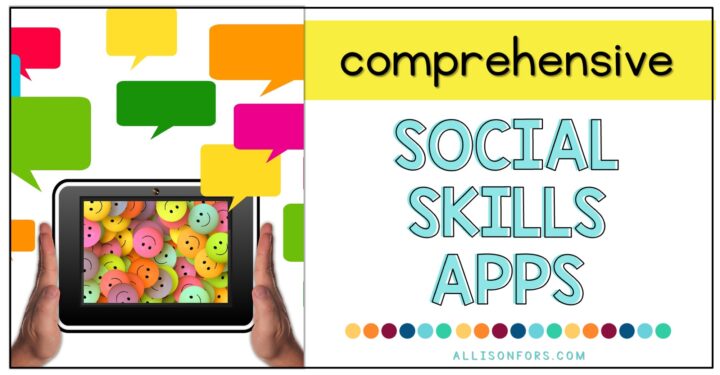
A Guide to the Prompting Hierarchy in Speech Therapy
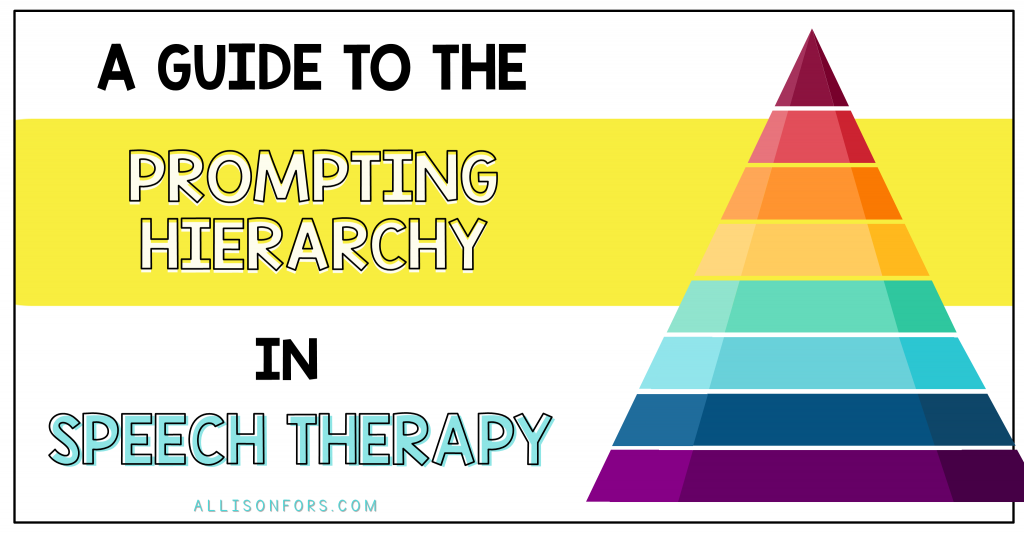
The prompting hierarchy is a structured, systematic method of assisting a person in learning new skills. It outlines the different ways we motivate our students to get the correct answer or achieve their goals. Prompt hierarchies provide many opportunities for communication. There are two different types of hierarchies: Most-To-Least and Least-To-Most.
Most-To-Least is used before a new skill is mastered. It provides a high level of support. This begins at the base of the hierarchy (physical assistance.)
Least-To-Most is used after a new skill is learned, and the person is working on mastery. This begins with the top of the hierarchy (pause.)
Choose the response latency time appropriate for your student (i.e. 30 seconds while you wait for a response) and if you don’t get the desired result, move onto the next prompt level in the hierarchy.
A Note about the Prompting Hierarchy
There are many different prompt hierarchies, and the one you choose and use is based on preference and your purpose. Most hierarchies are created for Augmentative and Alternative Communication (AAC). I highly recommend downloading and reading about Kate Ahern hierarchy. The big difference is physical assistance is not included. The reasoning for this is taking a child’s hand and moving it for them to communicate is not advisable. We want AAC users to know their voice is their own. Research has shown that modeling language on an AAC device is more effective than hand over hand or physical prompting. Kate Ahern says:
“What does a hand-on, full physical “cue” tell the child? It tells them that: A)we have the right to manipulate their bodies or make them touch or do things whether they want to or not and
B) that we have the right to force them to say things just because we want them to say it.”
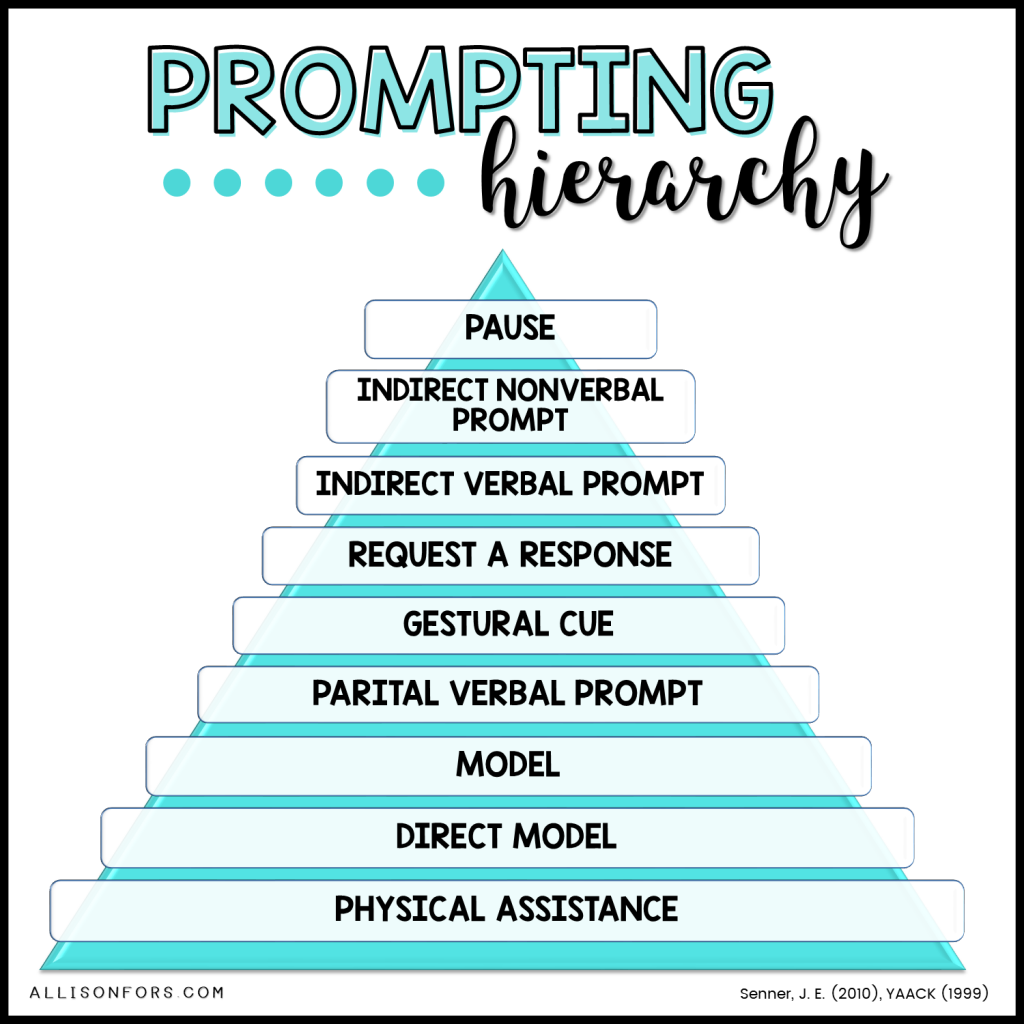
This infographic is available for free download.
Pause
The least invasive instructional support. Provide the person sufficient time to process the request and initiate communication with their own motivation. It is recommended to wait a minimum of ten seconds.
Indirect Nonverbal Prompt
Use your body language to show a form of communication is expected. Some examples include facial expressions, questions, hand motion, or eye contact.
Indirect Verbal Prompt
An indirect verbal prompt starts the student in the right direction without providing the answer. Often this is in the form of asking open-ended questions, which pushes them towards action, such as asking, “What happens next?” as they recount a story or, “Where does this piece go?” as they solve a jigsaw puzzle.
Request a Response
If there is still no response, try asking a specific question, such as “You need to ask me.” or “Tell me what you want.”
Gestural Cue
Use a gesture, such as pointing, reaching, or showing to let the person know what they are expected to do.
Partial Verbal Cue
Provide part of the verbal expected response, such as “You want the…”
Direct Model
If there is still not a response, model a potential response. Then pause and wait for the person to imitate or respond.
Physical Assistance
The most invasive instructional support. Provide hand-over-hand assistance.
You may be interested in the Speech-Language Development Handouts which includes a section on prompting!
Do you have any favorite strategies for using the prompting hierarchy?

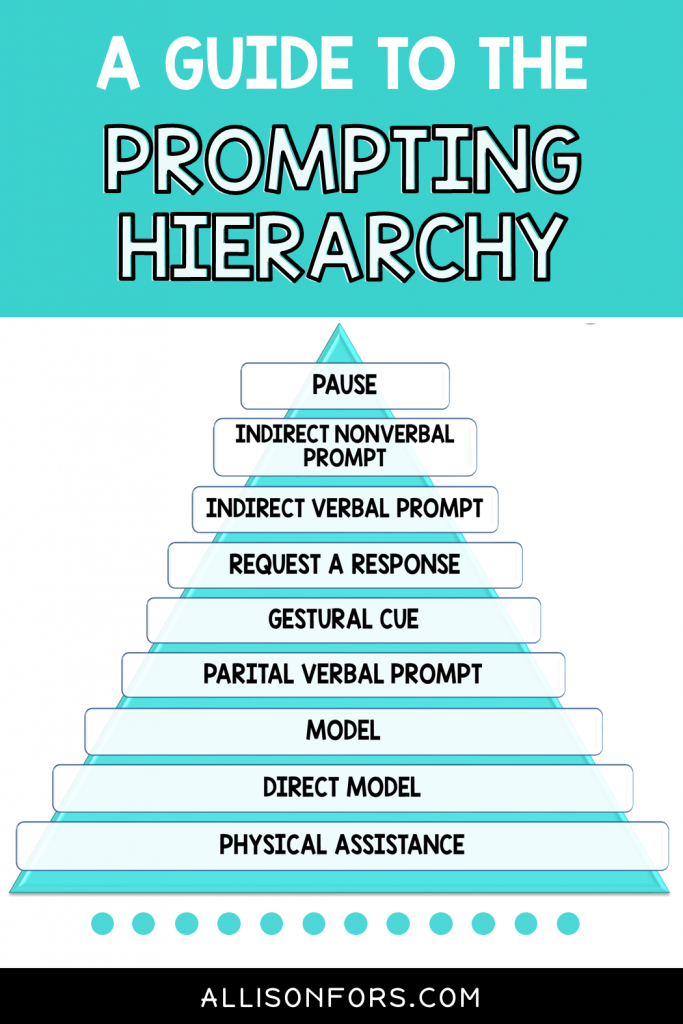



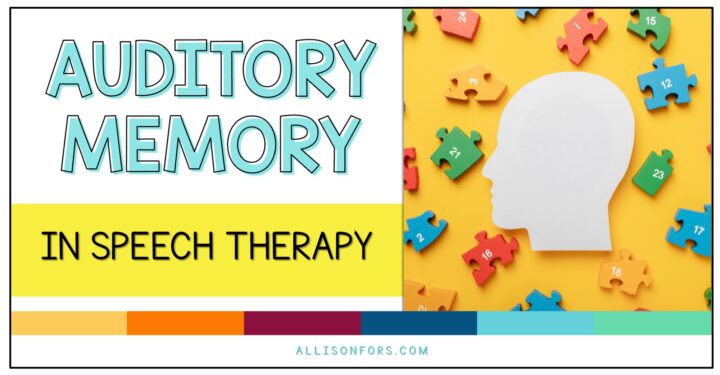

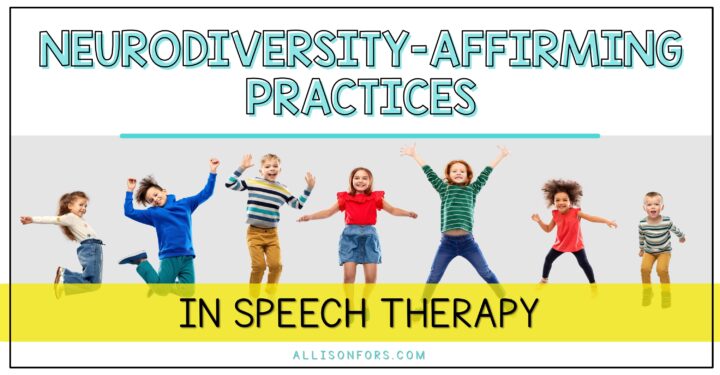

2 Responses
Hi Allison, great post! I am an SLP as well beginning to gain experience working with AAC devices. Would you mind sharing the research article stating that modeling language on a device is better than providing physical prompts?
Thanks so much!
Hi! Biederman, G., Fairhall, J. L., Raven, K. A., & Davey, V. (1998). Teaching basic skills to children with Down Syndrome and developmental delays: The relative efficacy of interactive modeling with social rewards for benchmark achievements and passive observation. Down Syndrome Research and Practice, 5(1), 26-33. doi:10.3104/reports.72